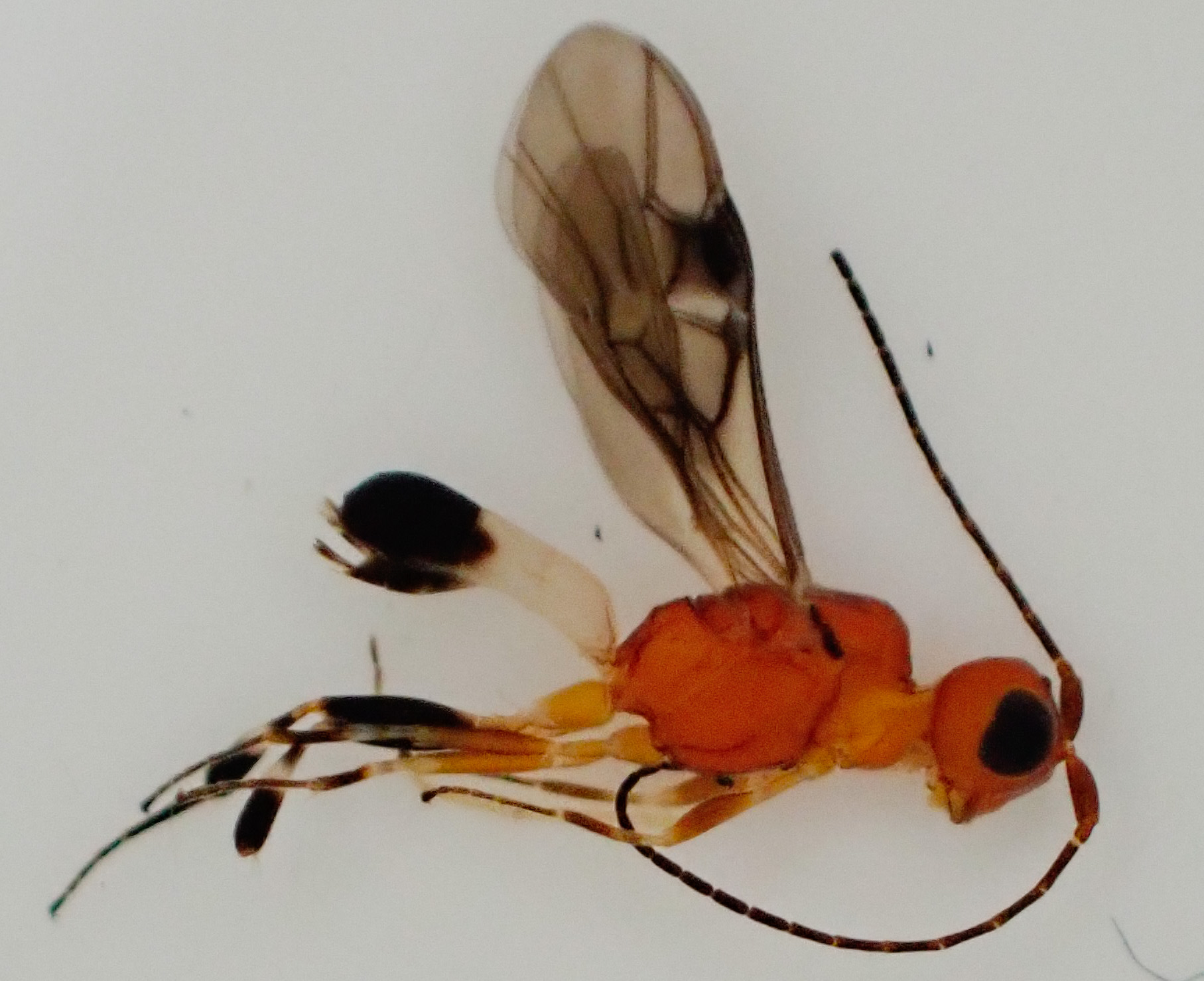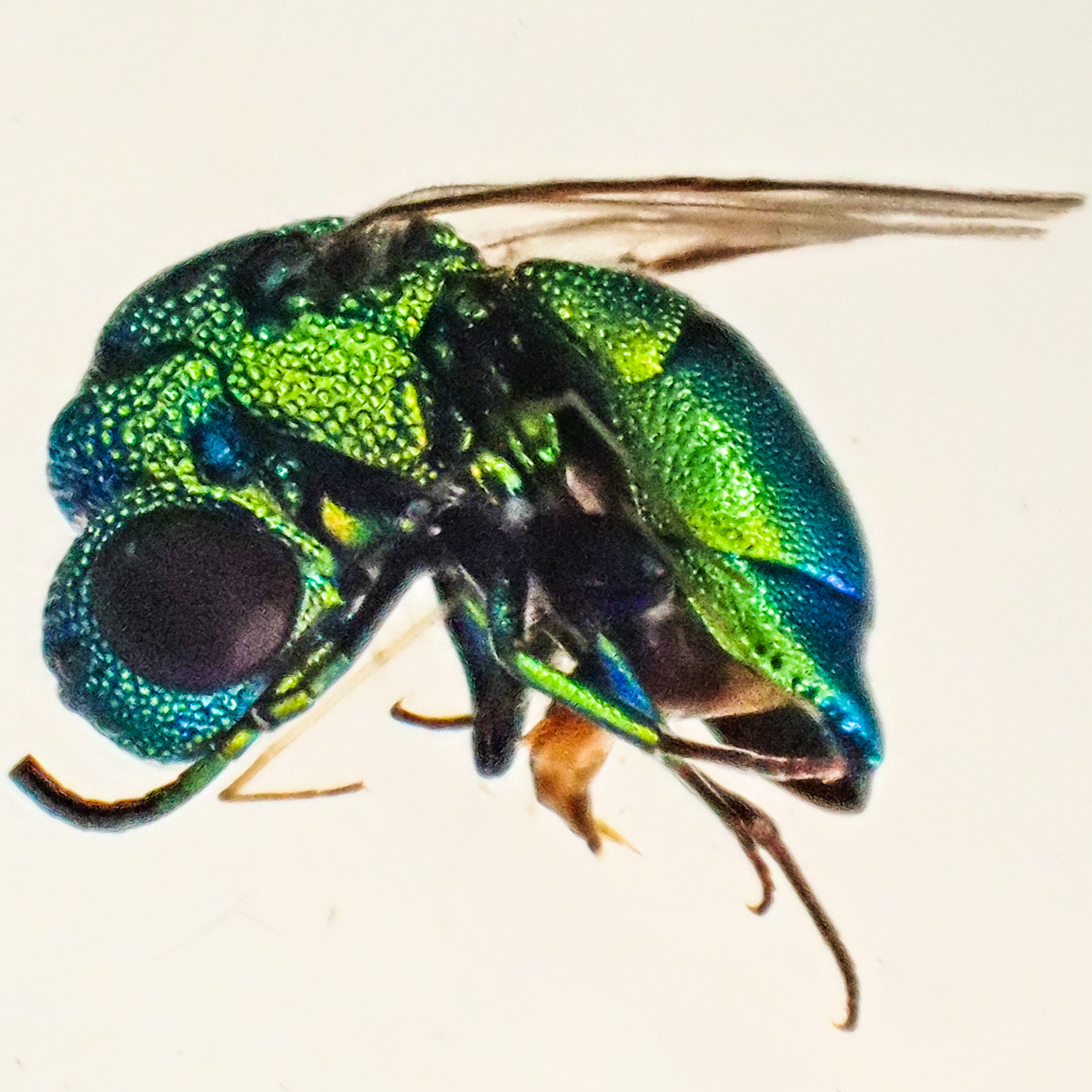Hello everyone at Waikerie! I have sorted your last three trap samples that you sent me, and now Karen from Riverland West Landcare is going to take the trap down for winter – we are not catching too much anymore as it is getting cold, and the trap is getting blown down a lot in the high winds and storms.
Inside these traps were lots of the same insects as we’ve caught before, but I wanted to show you one I haven’t talked about before: the hoverfly!

Hoverflies are from the fly (Diptera) family Syrphidae. They are often seen hovering at flowers, as many species drink nectar and eat pollen as adults. Some of them can be important pollinators of plants! They are also often yellow and black striped, and look a little bit like wasps. To tell the difference between a hoverfly and wasp, the easiest thing to do is count the wings – flies have one pair of wings, whilst wasps have two pairs of wings!
There were some more microgastrines (the parasitoid wasps I study) in these traps too, which was very exciting. There was a specimen that I think is the same species of Glyptapanteles that was caught in the trap at Ramco Primary School, and also this very cool species in the image below, which is a species in the genus Miropotes. I have been comparing it to the already described species of Miropotes and there is only one species that it looks similar to – if it isn’t that one, then it’s new!
I will keep you updated as I keep working on it. I need to pin the wasp out and dry it out from the ethanol to allow me to see more closely the tiny structures on it (for example, I will look at how bumpy different parts of the body is – we call this the ‘sculpturing’, and I will measure and look at the different shapes of parts of the body) to see if it is the same as the already described species, or whether it is different enough to be a new species! I will also pull a couple of legs off to sequence part of the DNA.

She is a female wasp, I’ve pointed to the ovipositor covers in the picture below. Her ovipositor is the needle-like thing she uses to inject her eggs into caterpillars so that her babies can hatch out inside the caterpillar and eat it from the inside. The ovipositor covers (she has two, one either side of the ovipositor) are what we can see in the picture – they are like a case that protects her delicate ovipositor when she is not using it.

I hope you’ve enjoyed these little updates on what has been in your traps. When I come visit next time I will bring lots of the samples and some microscopes, so that you can see them all up close!




























